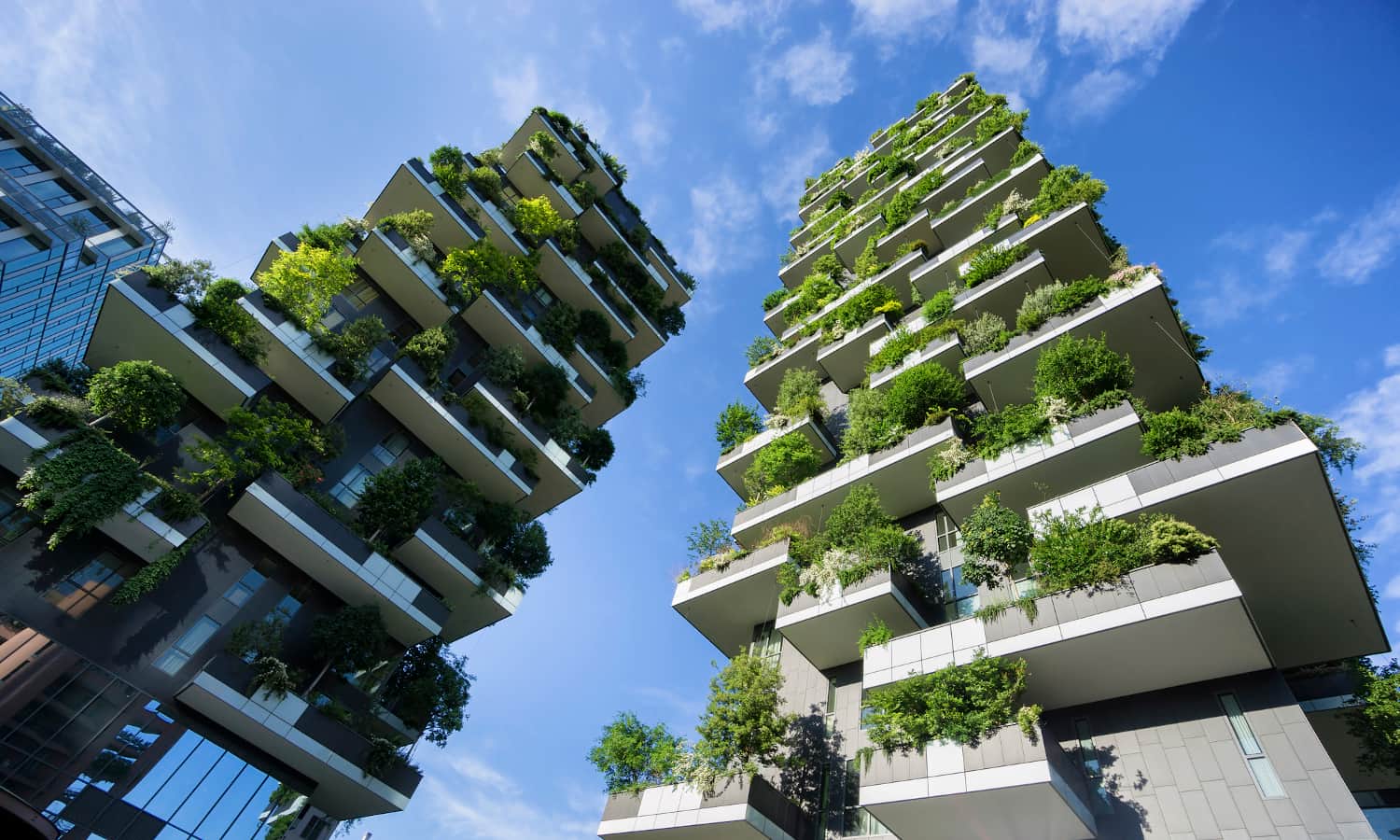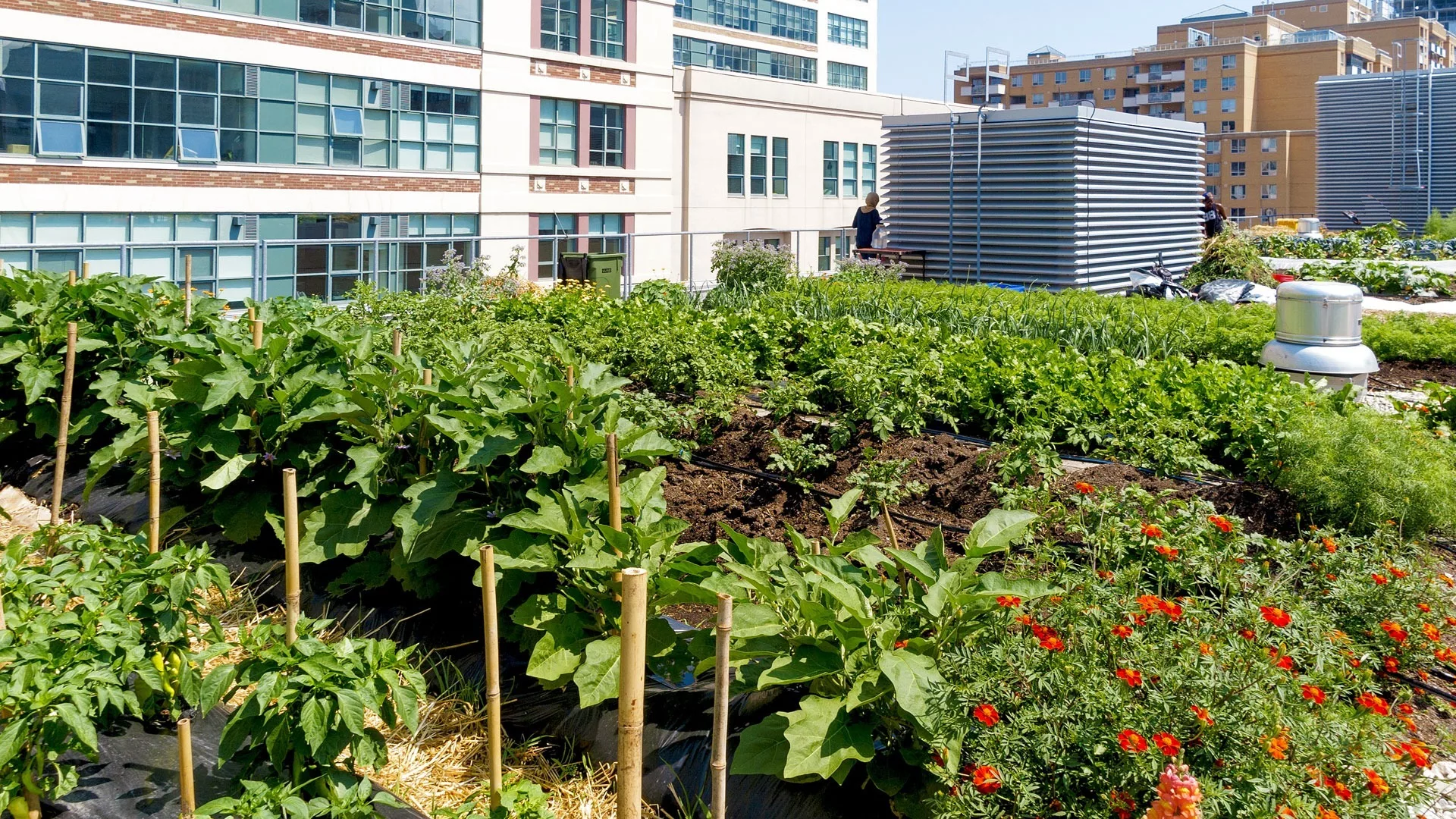Vertical Farming and Urban Agriculture
Md. Joynal Abdin*
Business Consultant & Digital Marketer
Co-Founder & CEO of Bangladesh Trade Center
In recent decades, the global landscape of agriculture has undergone a remarkable transformation, driven by burgeoning population growth, urbanization, and the challenges posed by climate change. In this context, Bangladesh stands as a prime example of a nation grappling with the intricate interplay of these factors. With a population density among the highest in the world and a significant portion of its population residing in urban centers, the traditional model of agriculture is under strain. The solution to this pressing challenge lies in the innovative concepts of vertical farming and urban agriculture, which have the potential to revolutionize food production, enhance food security, and promote sustainable development in Bangladesh.
Bangladesh, often referred to as the “land of rivers,” is famed for its fertile deltaic plains nurtured by the confluence of the Ganges, Brahmaputra, and Meghna rivers. Historically, agriculture has been the backbone of the nation’s economy, employing a substantial portion of its workforce and contributing significantly to its GDP. However, the rapid pace of urbanization, coupled with the rising population, has presented an acute dilemma: how to provide adequate food for the nation’s citizens while facing constraints of land availability and shifting weather patterns due to climate change.

Vertical Farming: A Paradigm Shift in Agriculture
Bangladesh, with its dense population and limited arable land, faces unique challenges in ensuring food security for its citizens. The rapid pace of urbanization, coupled with the impact of climate change on traditional agricultural practices, necessitates innovative solutions. Vertical farming holds tremendous potential in the context of Bangladesh, addressing key challenges while offering a pathway to sustainable agriculture. Here are the specific details about vertical farming in the Bangladeshi context:
- Land Scarcity: Bangladesh is one of the most densely populated countries in the world, with limited available land for traditional horizontal farming. Vertical farming’s space-efficient design allows for cultivation within urban areas, repurposed buildings, or even on rooftops. This approach can help bridge the gap between food production and population growth, particularly in densely populated cities like Dhaka.
- Urbanization: The ongoing migration of people from rural to urban areas has led to increased demand for food in cities. Vertical farming, when integrated into urban planning, can provide a local source of fresh produce, reducing the strain on rural agricultural areas and minimizing the need for extensive transportation networks.
- Climate Resilience: Bangladesh is highly vulnerable to the impacts of climate change, including erratic rainfall patterns, flooding, and salinity intrusion in coastal areas. Vertical farming’s controlled environments protect crops from these adverse conditions, offering a reliable source of food even during climate-related disruptions.
- Year-Round Production: Vertical farming’s ability to provide consistent and reliable yields throughout the year is especially valuable in Bangladesh, where traditional agriculture is often affected by monsoon seasons and other climatic variations. By enabling year-round production, vertical farming contributes to enhancing food security.
- Water Efficiency: Water scarcity is a growing concern in Bangladesh, particularly during dry periods. Vertical farming’s closed-loop hydroponic or aeroponic systems can significantly reduce water consumption compared to traditional soil-based farming, making it a sustainable option in a country where water resources are precious.

- Freshness and Nutrition: The proximity of vertical farms to urban areas ensures that produce reaches consumers shortly after harvest, preserving its freshness and nutritional value. This is crucial in a country where access to high-quality, locally grown produce can have a positive impact on public health.
- Employment Opportunities: The implementation of vertical farming in Bangladesh can create new job opportunities, particularly in areas related to technology, agricultural innovation, and urban agriculture. This can contribute to the country’s economic development while addressing unemployment challenges.
- Reducing Food Imports: Vertical farming’s potential to produce a diverse range of crops locally can reduce the need for importing certain perishable goods, saving foreign exchange and making the nation’s food supply more resilient to global supply chain disruptions.
- Educational and Community Benefits: Vertical farming can serve as a platform for education and community engagement, raising awareness about sustainable agricultural practices, nutrition, and the importance of locally sourced food.
- Government Support and Research: For vertical farming to reach its full potential in Bangladesh, it requires support from the government in terms of policies that encourage urban agriculture and research funding to develop locally adapted technologies and best practices.
Vertical farming has a crucial role to play in Bangladesh’s quest for sustainable food security, especially in the face of urbanization, land constraints, and climate challenges. By embracing this innovative approach, Bangladesh can ensure a more resilient and efficient food production system while nurturing its economic and environmental sustainability.

Urban Agriculture: Nurturing Sustainability in Cities
Urban agriculture is a dynamic and multifaceted practice that involves the cultivation of crops and rearing of animals within urban environments. In the context of Bangladesh, a densely populated nation undergoing rapid urbanization, urban agriculture emerges as a vital strategy to address food security, reduce pressure on rural areas, enhance green spaces, and promote community resilience. Here are the specific details about urban agriculture in the Bangladeshi context:
- Rooftop Gardens: In cities like Dhaka and Chittagong, where land is at a premium, rooftop gardens offer a practical solution. These gardens transform unused rooftop spaces into productive areas for growing vegetables, herbs, and even small fruits. Rooftop gardens contribute to local food production, provide temperature regulation for buildings, and improve air quality.
- Local Produce: Urban agriculture allows cities to produce a portion of their own fresh produce, reducing the reliance on food imports from rural areas. This localization of food production is crucial for improving food security, particularly in densely populated urban centers where access to rural farmland is limited.
- Community Engagement: Urban agriculture fosters a sense of community and ownership. Community gardens and shared plots bring people together, creating opportunities for education, social interaction, and the collective cultivation of food. This sense of connection promotes a stronger sense of place in rapidly growing cities.
- Reducing Food Deserts: In many urban areas, there are neighborhoods with limited access to fresh, nutritious produce. Urban agriculture can help alleviate this issue by establishing community gardens or small farms in these underserved areas, providing residents with access to locally grown, affordable food.
- Green Spaces and Biodiversity: As cities expand, green spaces are often reduced. Urban agriculture reintroduces greenery to the urban landscape, enhancing biodiversity, providing habitats for beneficial insects, and contributing to overall urban ecosystem health.

- Waste Management: Urban agriculture can integrate waste reduction strategies. Organic waste from kitchens can be composted and used as nutrient-rich soil amendments for urban gardens. This reduces the amount of waste going to landfills and supports a circular economy.
- Employment Opportunities: Urban agriculture generates employment, particularly for those with an interest in horticulture, agriculture, or sustainable practices. It can create jobs in gardening, urban planning, education, and even marketing of locally grown produce.
- Education and Skill Development: Urban agriculture offers an excellent platform for education, teaching urban residents about sustainable farming practices, nutrition, and the value of local food systems. It can also foster interest in agriculture as a viable livelihood, encouraging skill development in a sector with significant potential.
- Government Support: For urban agriculture to thrive in Bangladesh, it requires support from local governments, including policies that promote and protect urban farming practices, access to resources such as land and water, and providing training to urban farmers.
- Combating Climate Change: Urban agriculture can contribute to climate change mitigation by promoting green infrastructure, which absorbs carbon dioxide, reduces the urban heat island effect, and improves air quality, thus creating more resilient and sustainable cities.
Urban agriculture holds great promise in the context of Bangladesh’s rapid urbanization. It addresses food security, community engagement, environmental sustainability, and economic development, making it an essential component of the country’s urban planning and agricultural strategy. As Bangladesh continues to urbanize, integrating urban agriculture into its cities can pave the way for a more sustainable and resilient future.

The Confluence of Sustainability and Food Security
The synergy between vertical farming and urban agriculture is pivotal in advancing the dual objectives of sustainability and food security. The world is rapidly urbanizing, and Bangladesh is no exception. By 2050, it is projected that nearly 70% of the global population will reside in cities. Ensuring that these urban centers have access to fresh, nutritious produce is imperative for public health and well-being.
Vertical farming and urban agriculture minimize the “food miles” associated with transportation, which not only reduces greenhouse gas emissions but also lessens the vulnerability of the nation’s food supply to external shocks. Additionally, by decentralizing food production and encouraging local cultivation, these practices enhance the resilience of communities, making them less susceptible to disruptions in global supply chains.
In conclusion, the urgency of the agricultural challenges faced by contemporary Bangladesh necessitates innovative solutions that transcend traditional paradigms. Vertical farming and urban agriculture offer a transformative path forward, marrying technological advancements with environmental consciousness. These approaches hold the potential to not only ensure food security for the nation’s burgeoning population but also to pave the way for a more sustainable and resilient future. As Bangladesh strides into a new era, embracing these practices will undoubtedly play a pivotal role in shaping the nation’s agricultural landscape and nurturing its growth in the decades to come.
Vertical Farming and Urban Agriculture :: Vertical Farming and Urban Agriculture
*Author’s Short Profile:

Mr. Md. Joynal Abdin is a Business Consultant & Digital Marketer based in Dhaka, Bangladesh. He is also Co-Founder & CEO of Bangladesh Trade Center. Previously he served at Dhaka Chamber of Commerce & Industry (DCCI) as Executive Secretary; DCCI Business Institute (DBI) as Executive Director; SME Foundation as Deputy Manager; and the Federation of Bangladesh Chambers of Commerce & Industry (FBCCI) as Assistant Secretary.
The list of services Mr. Abdin is offering includes but not limited to Business Research and Documentations like Feasibility Study, Project Proposal Preparation, Writing Business Manual, Standard Operating Procedures etc.; Export Market Selection and Product Positioning at Home and Abroad; Buyers-Sellers Matchmaking; Website Development; Search Engine Optimization (SEO); and Social Media Marketing etc.

